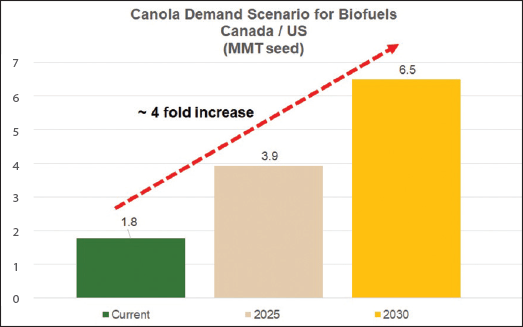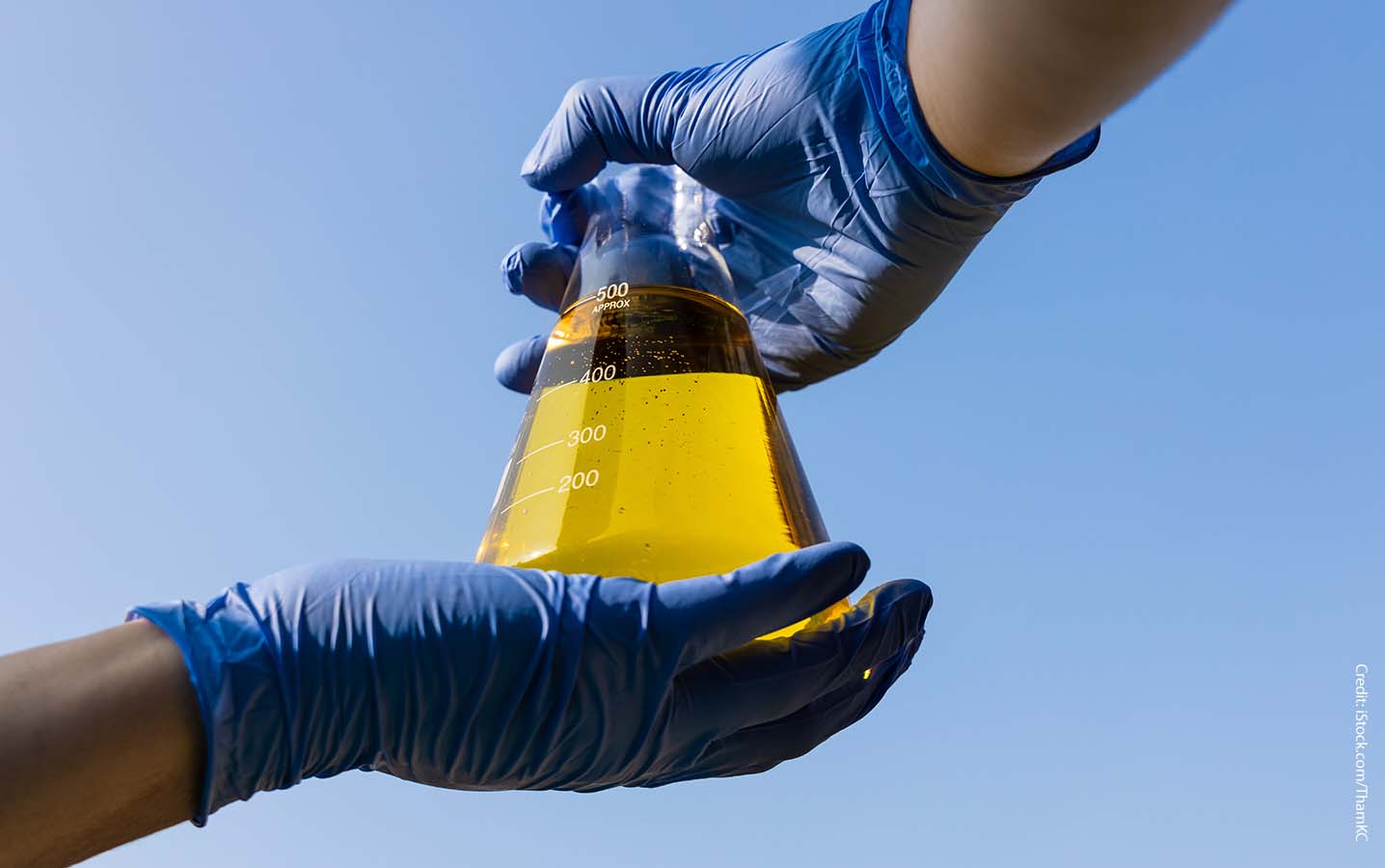Renewable Diesel Taking Over From Biodiesel
Global demand for plant-based oils increases each year and North American demand will get a big jolt in the next couple of years from renewable diesel production in the U.S. and Canada.
U.S. renewable diesel processing capacity was at around one billion gallons per year in 2021, and the U.S. Energy Information Agency expects a rapid rise, based on facilities under construction and announced, to five billion gallons per year by 2024.
Canadian renewable diesel capacity, based on public announcements, could exceed three billion litres (0.8 billion U.S. gallons) per year by 2027, says Chris Vervaet, executive director of the Canadian Oilseed Processors Association (COPA).
One Canadian announcement is from Federated Co-operative Limited (FCL), which is building a renewable diesel processor near Regina. FCL will blend renewable diesel with petroleum diesel for Co-op fuel pumps. In related news, FCL announced in January 2022 a joint venture with AGT Food and Ingredients Inc., to construct a $360 million canola crush facility near the renewable diesel plant. The crush plant will supply approximately half the canola oil needed for the diesel facility, with the rest coming from other canola processing facilities. FCL will have a few suppliers to choose from. Its joint venture is the third new canola processing facility announced for the Regina area and the fourth for Saskatchewan in the past 12 months.
Rapid growth in renewable diesel production capacity is the major factor behind these construction announcements. “Global demand for oil and meal is growing,” says Vervaet, “but the catalyst for such a surge in investment is biofuel demand.”
Renewable diesel is produced through a different chemical reaction than biodiesel, which retains some properties of its oil source, including cold-weather viscosity. Renewable diesel, meanwhile, is chemically indistinguishable from any other diesel, so it can be used at any amount and “dropped in” at any rate.
Processors can make renewable diesel from any plant or animal fat. In North America, the primary feedstocks will be soybean oil and canola oil. Secondary feedstocks will be tallow and used cooking oil.
Vervaet says renewable diesel could result in a fourfold increase in the use of Canadian canola in American and Canadian biofuels. Current canola use in North American biofuel production represents around 1.8 million tonnes of seed. By 2030, that could be 6.5 million tonnes, Vervaet says. For reference, total Canadian canola production was around 20 million tonnes per year from 2016 to 2020. (Drought and heat reduced production to only 12.6 million in 2021.)
West Coast Reductions in Vancouver handles tallow and used cooking oil. A lot of restaurant cooking oil is already collected and recycled, so there won’t be a lot extra to satisfy new demand. However, used cooking oil recycled for renewable diesel has a “really good look”, says Jared Girman, manager of strategy initiatives at West Coast Reduction. The carbon intensity score for canola oil used first for healthy frying and then re-used for fuel is very good, he says.
But there isn’t near enough used cooking oil, so first generation vegetable oils – soybean and canola straight out of processing plants – will be the primary feedstock for renewable diesel. Whether used as a primary or secondary feedstock, canola oil will reduce the carbon intensity of North America’s diesel fuel supply. Vervaet has three key elements required for Canada to meet this demand opportunity:
- Canada must maintain a competitive and predictable regulatory environment. Biofuel policies must create meaningful and long-term demand signals.
- Canada needs to produce more canola. “Productivity increases are essential,” Vervaet says. He’d like to see a commitment from government to fund research that will boost productivity.
- Canada needs to maintain market access in existing markets, especially the U.S. renewable diesel supply chain, and we will need new markets for canola meal.
-Jay Whetter is editor of Canola Digest

Current canola use in North American biofuel production represents around 1.8 million tonnes of seed. Chris Vervaet estimates it could be 6.5 million tonnes by 2030.
Canada needs to produce more canola. “Productivity increases are essential.”





